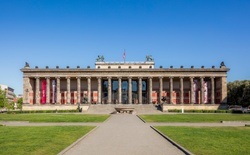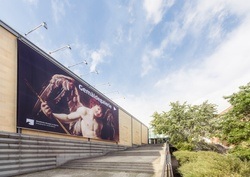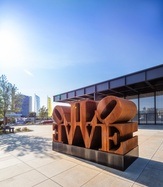
Schloss Britz
In the location's words:
With its listed 2-hectare park and the manor house belonging to the historic ensemble, the Britzer "Schloss" is the only estate in Berlin that has been completely preserved in its village setting and building fabric and can still be experienced. The historic animal husbandry also contributes significantly to the agricultural ambience.
The manor house, which was restored in 1985-88, is not only an outstanding architectural monument within Berlin's residential culture. With its permanent exhibition on representative residential culture of the Wilhelminian era and the regular special exhibitions, it is a living part of Berlin's cultural landscape.
The Kulturstiftung Schloss Britz cultural foundation also organizes concerts, theater performances and other performance formats in the historic ballroom, on the open-air stage and in the modern hall of the Kulturstall.
The magnificent Britz manor house was built at the beginning of the 18th century on the site of a medieval half-timbered house and for a long time was the rural residence of high-ranking Prussian court officials and state ministers. In the 19th century, the manor came into bourgeois ownership and the farm was increasingly run using industrial methods. But even during this time, the owners changed frequently and the estate passed through various hands as an object of speculation until it was purchased by the industrialist family Wrede in 1865, who kept the estate in their possession until 1924. In 1880, the manor house was extensively remodeled according to designs by architect Carl Busse. The park was extensively filled in on the garden side, so that the former first floor of the manor house has since formed the cellar. On the street side, a two-armed ramp was built up to the former upper floor and a basement was created. Stylistically, Carl Busse, who had also previously worked on the conversion of Jagdschloss Glienicke, was inspired by the French Renaissance.
In 1924, the Britz estate with its extensive forests and fields was sold to the city of Berlin, which soon after built the first housing project on the former estate, the Hufeisensiedlung. Later, Britz-Süd was added as Berlin's first large housing estate after 1945. The remaining agricultural land was operated as a Berlin city estate until 1957.
After 1924, the manor house was divided into four apartments, which were rented out until the end of the Second World War. After 1945 - the estate survived the turmoil of war without major damage - the building was then used as a "refugee home" and as a place to live for war orphans and finally functioned as a municipal children's home until 1985.
In 1971, Schloss Britz was placed under a preservation order. The borough of Neukölln restored the building after the children's home closed from 1985 to 1988, used it as a guest house and reconstructed the associated park. In the 1990s, work began on furnishing the prestigious living quarters with furniture, decorative arts and paintings from the Wilhelminian era.
Öffnungszeiten
Similar pages
 Museum
Museum
IKONO Berlin
 Museum
Museum
Dokumentationszentrum F…
 Museum
Museum
Altes Museum
 Museum
Museum
Deutsches Historisches …
 Museum
Museum
James-Simon-Galerie
 Museum
Museum
Museum für Kommunikatio…
 Museum
Museum
Museum Barberini
 Museum
Museum
Gemäldegalerie
 Museum
Museum
Alte Nationalgalerie
 Museum
Museum
Militärhistorisches Mus…
 Museum
Museum
Neue Nationalgalerie
 Museum
Museum
Humboldt Forum
 Museum
Museum
Hamburger Bahnhof - Nat…
 Museum
Museum
PalaisPopulaire
 Museum
Museum
Gropius Bau
 Museum
Museum
Kunstgewerbemuseum
 Museum
Museum
Kunstbibliothek
 Museum
Museum
Museum Europäischer Kul…
 Museum
Museum
DRIVE. Volkswagen Group…
 Museum
Museum
URBAN NATION Museum for…


